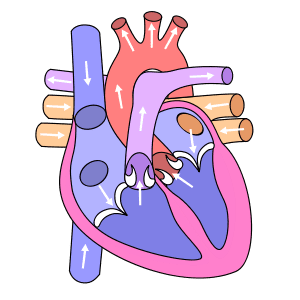MELBOURNE researchers are a step closer to growing transplantable tissue to patch up heart defects after turning human skin cells into “beating heart” tissue that can connect to the circulation system.
The major breakthrough by the O’Brien Institute in preclinical models could eventually aid heart-attack victims and is also tipped to reduce the number of animals used in testing new drugs.
O’Brien’s cardiac regeneration group leader, Dr Shiang Lim, said while laboratories around the world were making heart cells from stem cells, his team had advanced the research by successfully connecting the human heart tissue to the host’s blood circulation.
“People have managed to create 3D heart tissue in the laboratory, but the size and thickness is limited by the lack of blood vessels,” Dr Lim said.
“We’re letting the body do its natural work.
“The blood vessels aren’t just sitting there, they’re functional and supplying blood to the heart tissue.”
Researchers first genetically reprogrammed human skin cells to become stem cells, which they further changed into heart cells using chemical and electrical stimulation.
Using a 3D chamber pioneered by the Melbourne regenerative surgery institute, they implanted these human heart cells into an animal model, connecting it to its blood vessel.
The findings, published in the journal, Stem Cells Translational Medicine, showed that four weeks after implantation, the implanted human heart cells had survived, engrafted into the surrounding tissue and were beating.
Dr Lim said the first application for their beating heart tissue would be for drug testing to help reduce and complement animal experimentation, reducing the time and cost of getting a medication on to market.
“We know a lot of drugs discovered and tested in animals work great, but when it’s translated into humans doesn’t work because of the biological differences,” he said.
“We can test on this engineered human heart tissue first before moving into clinical trials.”
Go deeper with Bing News on:
Transplantable tissue
- CORRECTING and REPLACING PHOTO United Therapeutics Announces World’s First Successful Xenothymokidney Transplant
Please replace the photo for release dated April 24, 2024 with the accompanying corrected photo. This press release features multimedia. View the full release here: A) Genetically modified source pig ...
- United Therapeutics Announces World’s First Successful Xenothymokidney Transplant
A) Genetically modified source pig, 16 to 20 weeks old. B) The thymus is then explanted from the source genetically modified pig, and the thymic tissue is implanted under its kidney capsule. C) The ...
- Living, domino donors possibilities for Indiana Township boy in need of 2nd liver transplant
Lucas Goeller is getting another shot. The 11-year-old from Indiana Township needs a new liver because the transplanted liver he received nine years ago is failing. Normally, that could mean a lengthy ...
- Culture Is the Lifeblood of Any Organization
Your culture influences how others perceive and interact with the business. It can affect your ability to find and retain top-tier talent and work with outside partners.
- Bioengineered Corneas Stand to Cure Blindness For Millions of People Around the World
Cornea transplantation is the most common way of restoring lost sight, but it's a very technical procedure that relies on donors.
Go deeper with Google Headlines on:
Transplantable tissue
[google_news title=”” keyword=”Transplantable tissue” num_posts=”5″ blurb_length=”0″ show_thumb=”left”]
Go deeper with Bing News on:
Engineered human heart tissue
- Affairs of the Heart
Find out how biomedical engineering professor Morten Jensen is developing innovative devices to produce better outcomes in cardiovascular medicine.
- First combined heart pump, pig kidney transplant in same patient successful
NYU Langone surgeons pave the way for xenotransplantation with a successful combined heart pump and gene-edited pig kidney transplant.
- Too Ill for Typical Transplants, Woman Gets a Pig Kidney and Heart Pump Instead
The patient, Lisa Pisano, had heart failure and end-stage kidney disease that required routine dialysis. She was not considered a candidate for human heart and kidney transplant due to her having ...
- Woman becomes 1st patient to undergo combined heart pump implant and pig kidney transplant
In a first-of-its-kind procedure, a terminally ill New Jersey woman received a pig kidney transplant and a surgically implanted mechanical heart pump.
- 14 recent scientific breakthroughs
T cells are integral in the immune system but can become "dysfunctional inside tumors." "The approval of Amtagvi represents the culmination of scientific and clinical research efforts leading to a ...
Go deeper with Google Headlines on:
Engineered human heart tissue
[google_news title=”” keyword=”engineered human heart tissue” num_posts=”5″ blurb_length=”0″ show_thumb=”left”]










